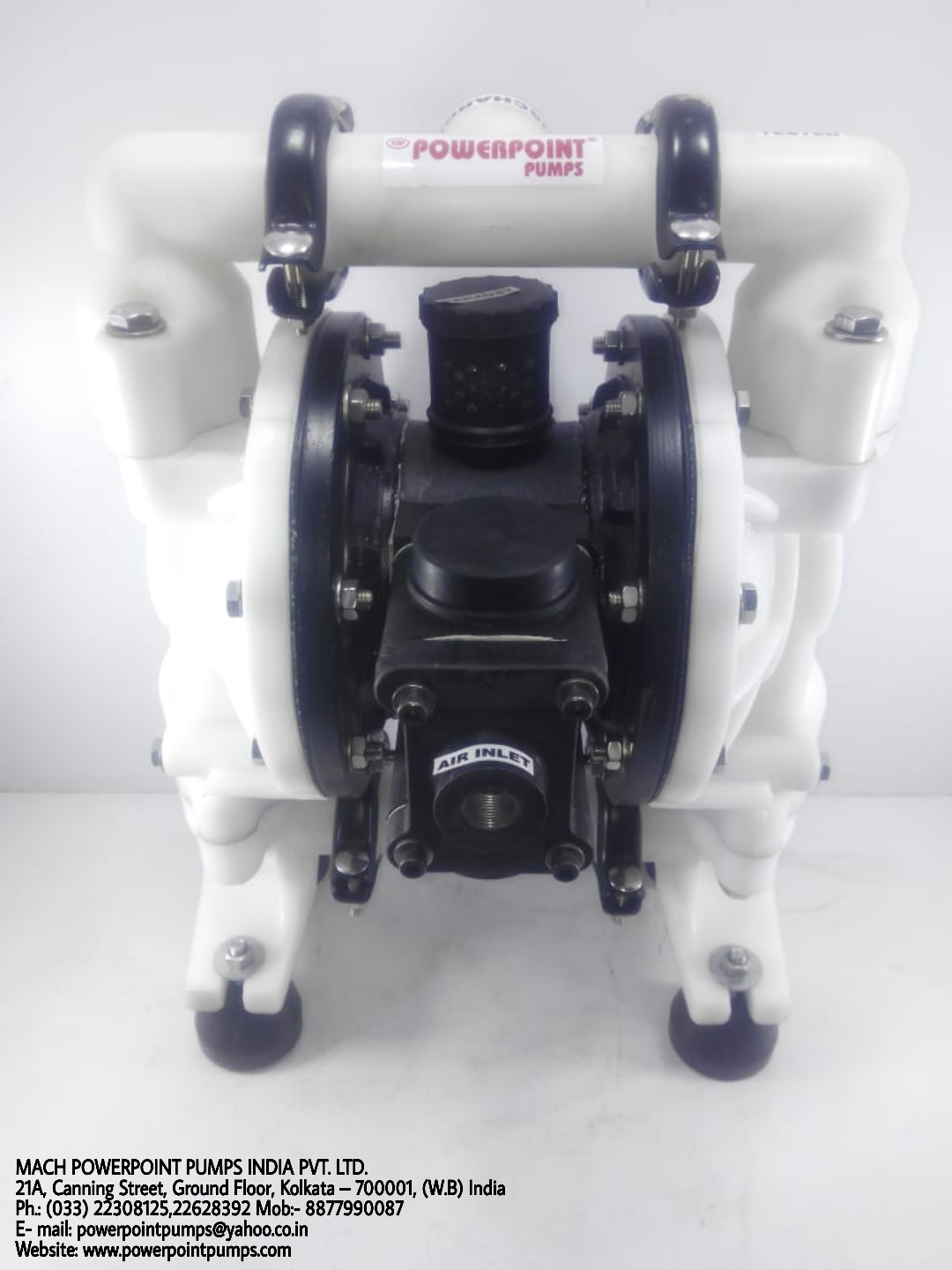
1. Can acids be pumped using Polypropylene (Plastic) pumps?
Acids can be pumped using PP diaphragm pumps after consulting a chemical guide for concentration & temperature limits.
2. What is an FLR (Filter-Lubricator-Regulator) unit? What purpose/use does it serve?
Air leaving a compressor is hot, dry or wet – which can damage & shorten the life of downstream equipment such as Pumps, valves, etc. Before air can be used it needs to be filtered, lubricated & regulated. An air ine filter cleans the compressed air.
3. Can AODD pump be operated at a pressure higher than recommended max. pressure?
No. The pump may start leaking, diaphragms may bulge/wear & inner plates may bend.
4. How do I regulate the flow of Diaphragm Pump?
You can regulate the flow using the regulator on FLR unit or using a flow control valve to increase or decrease the volume of air going to the pump.
5. Can an air operated diaphragm pump be submerged?
Absolutely, If the chemical is compatible with the pump MOC (material of construction) / housing & the air exhaust pipe should be above the level of fluid.
6. The pump was working properly, but it has slowed down & not getting the required capacity. What should be done?
Check fluid suction & discharge lines for any obstruction & also check valve sheets for any dust or remains.
7. What is the life of diaphragms?
Diaphragms life depends on many variables. Inspection of diaphragms every 4-6 months is recommended for continuous duty operations. The major factors leading to diaphragm failures are pressure, temperature & moisture.
8. What is the max. viscosity an AODD pump can pump?
12,000 cps is the max. viscosity which is recommended considering ideal conditions.
